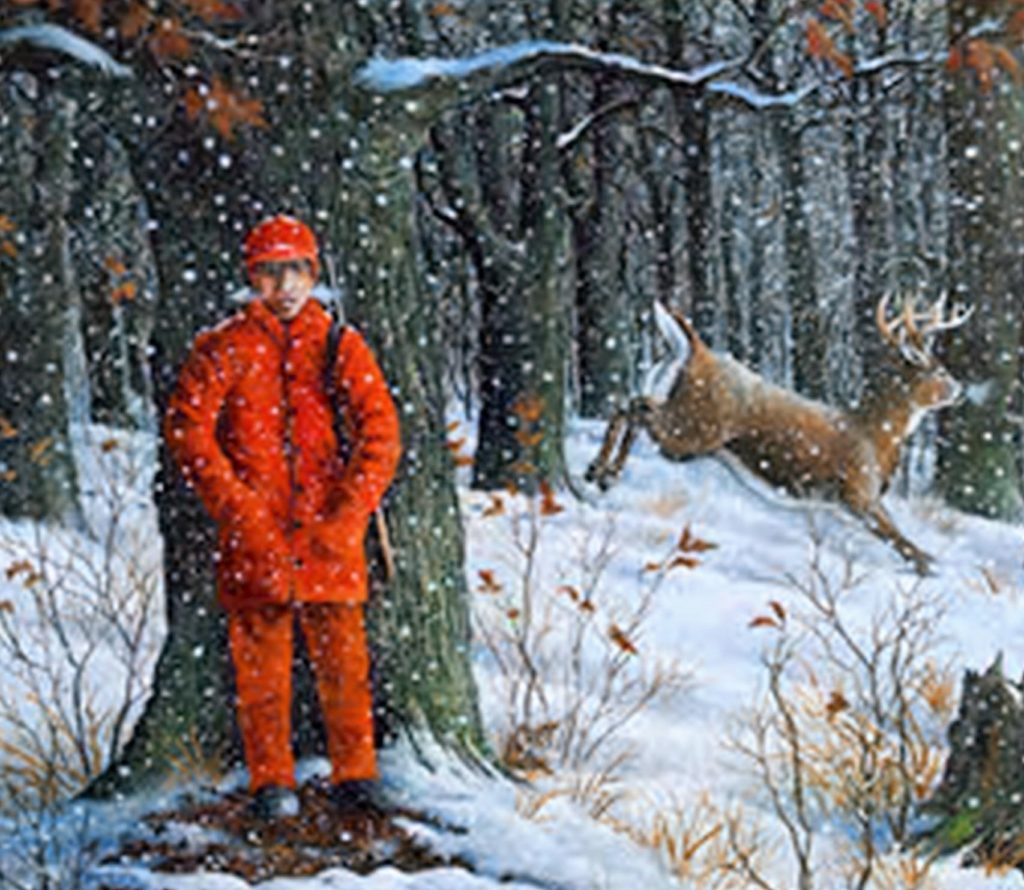15 May THE RIGHT WAY!!!
Deer hunting is different as hunters travel across the country. The Right Way to hunt in Maryland or Pennsylvania, may not be the Right Way to hunt in Montana or Wyoming.

Deer hunters have their preferred methods, weapons, and places. Archers seem to get their first shot at deer each fall. In some areas, bucks are still in velvet when archers take to the forests and fields. Next comes primitive black powder season. Single shot, muzzle loaded, maybe flint lock only season starts up. Early seasons may only last a few days before a later season opportunity comes along.
Rifle or shotgun season usually happens around Thanksgiving. Hunting camps open and hunters gather for their annual ritual of companionship and harvesting deer. Tree stands and blinds are filled as the hunters are locked and loaded to fill their annual tags.
When I moved to Montana, deer season changed for me. Not only could I hunt white tailed deer, I was now able to harvest Mule Deer. These huge deer were stinkier and different from whiteys. The antlers branched differently and 300 lb. dressed mulies made transport more of an issue. Throw in the largest deer, elk, and strategies, skills, and physical demands changed dramatically. Deer season in Montana ends at Thanksgiving. Rarely do we use deer stands. Severe weather and high altitude are a hardship. There are few oak trees and corn fields. Optics are as important as longer-range marksmanship. Horses, 4 wheelers, and quartering in the field, are often required to transport the harvest.
Hunting deer in Pennsylvania and MD. was in my blood. I learned to be a great Still Hunter. A mentor taught me the ropes and I was able to tag nice bucks routinely by moving slowly and stalking the mountains of western Maryland and PA. Reading sign, using all my senses, and blending into the forest were all important. Evitts Mountain, Martin’s Mountain, and other areas were familiar stomping grounds. I hunted in the footsteps of Meshack Browning.
Maryland hunting was mainly on smaller plots of land. This meant tree stands. Fred Bear argued that Tree Stands gave hunters an unfair advantage. After careful scouting, we placed stands in the most promising spots. Now it became a waiting game. Patience, hand warmers, great gear and more patience were required. We waited for hours for a few seconds of excitement and maybe a shot opportunity. Whether using a bow, gun, or rifle, the only thing that changed was how far you could shoot.
Eastern shore, or farm country hunting often was supported by baiting, where legal. Bushels of corn, apples, acorns, sugar beets, or sacks of special deer attractants would be placed near the stands. If you did this prior to the season, and maintained the feedings, you could train the deer to come into range more regularly. Mechanical feeders with timers would feed the deer when you could not. Salt was often dumped into old stumps to serve as deer licks. Native peoples located and hunted the same way centuries before.
Legal Baiting always seemed a bit like cheating to me. This advantage seemed more like killing and less like hunting. Some suburban and urban areas, with deer populations, need to be managed. Over populations of deer end up impacting traffic, pets, and landscaping. Lyme’s disease, car strikes, and feeding on expensive shrubbery must be managed. Baiting certainly does the trick. Hunting has become more about managing deer herds than sport.
Weapons also change. More populated hunting areas require shorter range, quieter, or different weapons than the open plains of Montana. 1000-yard shots are possible in Montana. In Maryland and Pennsylvania, most deer are shot under 100 yards. Slug guns and Black Powder weapons have improved and are capable of shots out to 300 or more yards. Most archery shots are under 20 yards. Each weapon requires practice to master the skills.
Each style of hunting has its own challenges, skills, and demands. Even as gear and weapons improve, the deer herds remain healthy and abundant. Hunting has become less popular which has promoted larger harvest quotas. The image and goals of hunting has also changed. Hunting for food is relevant but not as much. Many new hunters are chasing the antlers, trophies, and status. Much of the meat is donated to food banks and soup kitchens. If you could Catch and Release deer, but keep the antlers, many of today’s new hunters would do it. Back in the day, “You can’t eat antlers” was the hunter’s mantra.
Each weapon also has levels of challenge. Archers can use modern cam filled bows capable of ranges beyond 100 yards. Others prefer recurve bows that are slower, and more range restricted. Back in the day, I made a primitive bow using Osage Orange wood. The string was made from deer sinews. My hand made arrows were crafted from alder, flint tips, and turkey fletching’s. The buck I harvested was a real trophy, even though it was only a spike.
As a young hunter, my first bucks were harvested using “Punkin Balls” in a shotgun. Accuracy was maybe 75 yards on a good day. When I graduated to a 30-30 Winchester, my world got much bigger. Iron sites allowed more accurate and longer shots. When I added a Bushnell 4 power scope to my rifle, the world and my field of fire grew even bigger. Spikes and smaller bucks were the norm back then and without optics, everything looked like a doe.
The thing is that Hunting and Hunters change. If you need meat, buy it at the market where it is way cheaper than wild game would be. Hunters invest truckloads of money, time, and energy into harvesting a deer which may provide 40 to 60 pounds of processed meat. Hunting harvests are not cheap but may be the tastiest and most special meals.
The spirit of hunting and hunters has stayed the same. The magic of sunrises and sunsets, the smell of Fall leaves and acorns, the sounds and smell of a buck walking toward you, the Brother and Sisterhood of hunters are special. The sight of seeing a deer and identifying it as a buck never gets old. Huge trophy bucks with massive racks take the thrill and excitement to a whole different level.
The Right Way to deer hunt comes down to a personal and legal choice. Abide by the rules, limits, and sportsmanship. You will sleep better and celebrate the sport with honesty and pride. As a hunter, you will constantly change. At first harvesting any legal deer is fine. Then, you may want to harvest only a buck. Next you may want to harvest a specific buck. Changing weapons, locations, and techniques require different skills and practice. Great hunters are great students of the sport.
Hunt hard, hunt harder!
Montana Grant
For more Montana Grant, find him hunting the Right Way at www.montanagrantfishing.com.


